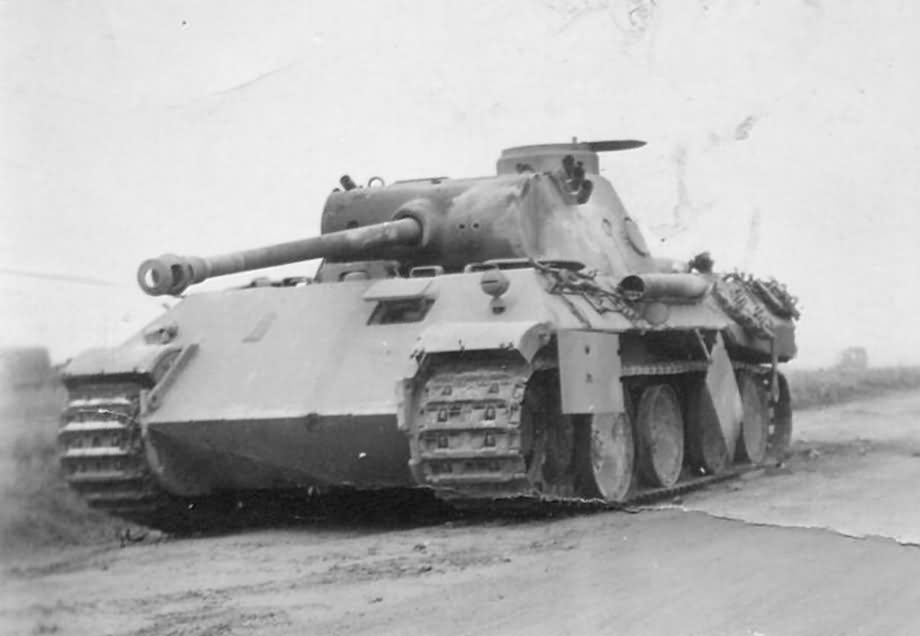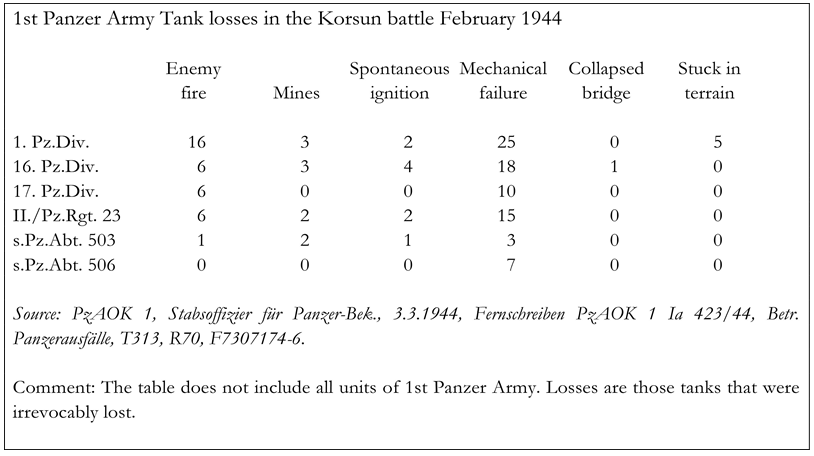
In the last week of January 1944, two German corps were cut off by Soviet tank armies, in the area around the small town of Korsun, south of Kiev. The Germans tried to counterattack, to reach the encircled soliders that were kept alive by air supply. Mainly, the counterattack was conducted by the III Panzer Corps, which comprised the 1st, 1st SS, 16th and 17th Panzer Divisions. Of these, the 1st and 16th Panzer Divisions were strongest and fielded the greatest number of tanks, including Panther tanks. The 1st SS-Panzer Division was mainly relegated to flank protection.
For most of the operation, thawing weather made the ground muddy, which seriously hampered movement and would prove to be a major problem when recovering heavy tanks. The table below gives the tank losses, which is covered in more detail in my book The Korsun Pocket: The Encirclement and Breakout of a German Army in the East, 1944.
 As can be seen, fire caused by technical defects still troubled the Germans. All nine such cases were Panthers and Tigers. It should be kept in mind though that the Panthers and Tigers were carrying the brunt of the fighting and the lighter were often relegated to a supporting role.
As can be seen, fire caused by technical defects still troubled the Germans. All nine such cases were Panthers and Tigers. It should be kept in mind though that the Panthers and Tigers were carrying the brunt of the fighting and the lighter were often relegated to a supporting role.
All in all, 35 tanks had been hit by enemy fire. Many of these were not destroyed, but immobilized and in the deep mud it proved impossible to recover them. As mines seldom cause heavy tanks to be completely destroyed, it must be assumed that most – perhaps all – of the ten tanks damaged by mines could have been recovered and repaired, had the weather conditions and combat situation been more favorable.
By far the most important category was however those 78 tanks that suffered mechanical problems and which could not be recovered. It was not only the German heavy tanks (Panthers and Tigers) that suffered from mechanical problems. The 17th Panzer Division had no Panthers or Tigers, but 62.5 % of its complete losses were still attributable to mechanical problems. Also, the 17th Panzer Division was not the spearhead. That roles was given to 1st Panzer Division, 16th Panzer Division and Pz.Rgt. Bäke, consisting of II./Pz.Rgt. 23 (Panthers) and s.Pz.Abt. 503 (Tigers). Hence, the tanks of 17th Panzer Division were in a geographical position that made it easier to recover them.
As can be seen, German tank irrevocable tank losses were actually to a rather small extent caused by enemy fire, compared to other causes. But also there were many that needed repairs. For example, of the 187 Panthers in the 1st Panzer Army units on 29 February, no less than 171 were in workshops. It would take some time to bring them back to operational readiness and if the units would become embroiled in heavy combat, it would be very difficult to bring all the tanks back to running order, before new tanks became repair objects.

Please keep the Eastern Front stories coming. So little analysis has been done on the many battles and campaigns. The operational and tactical level articles are fascinating. Thank you for all the Eastern Front articles so far!